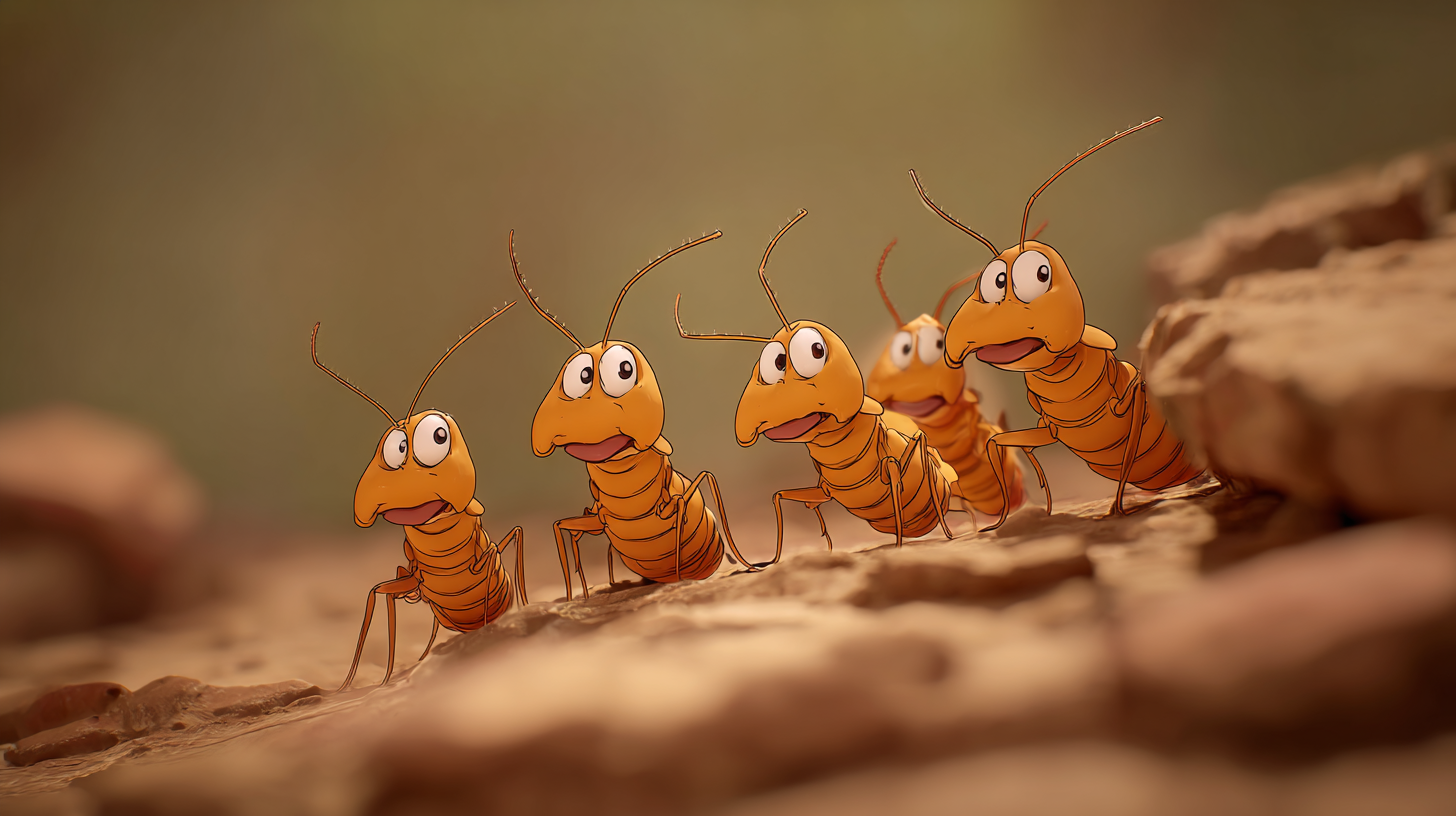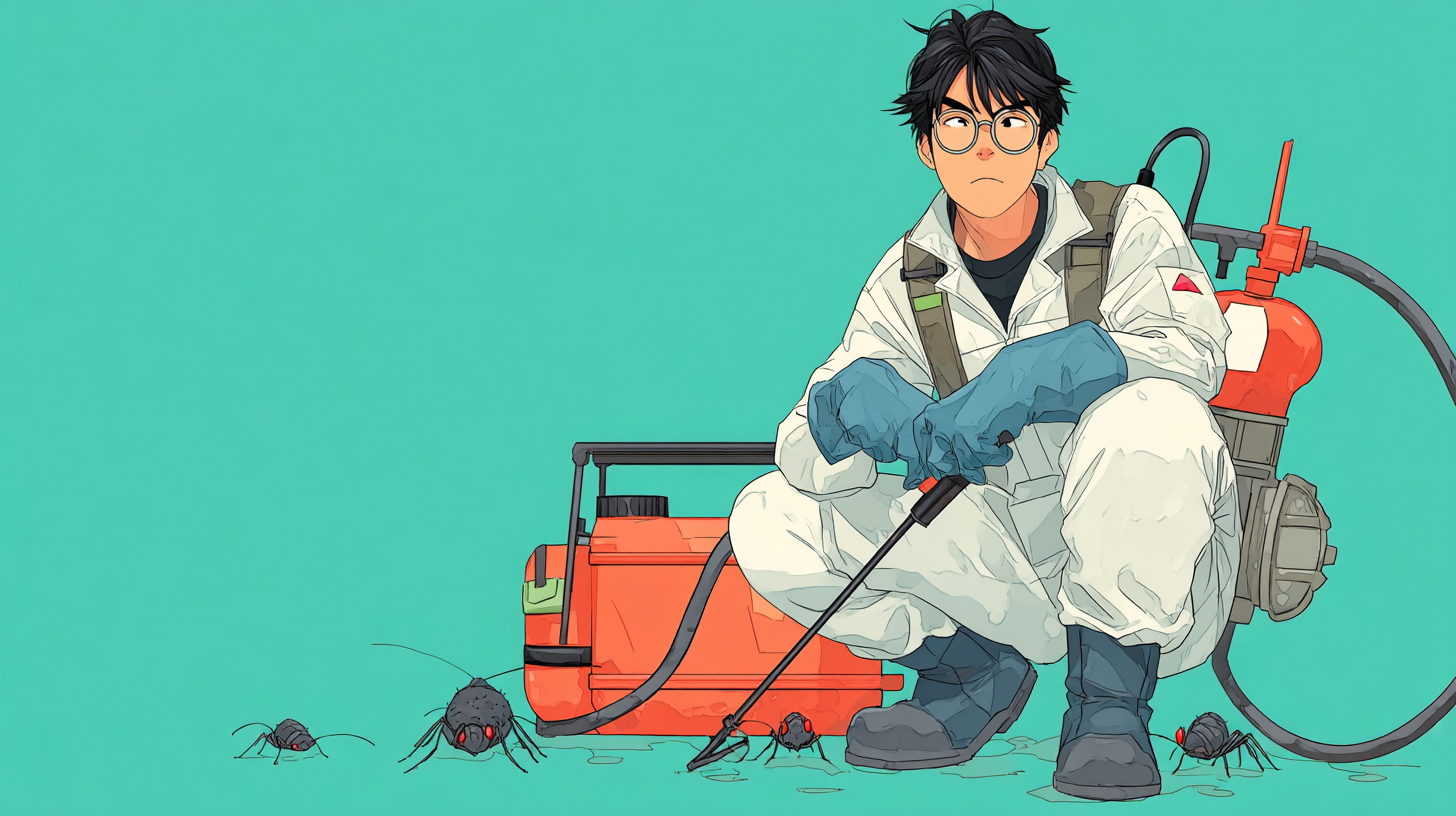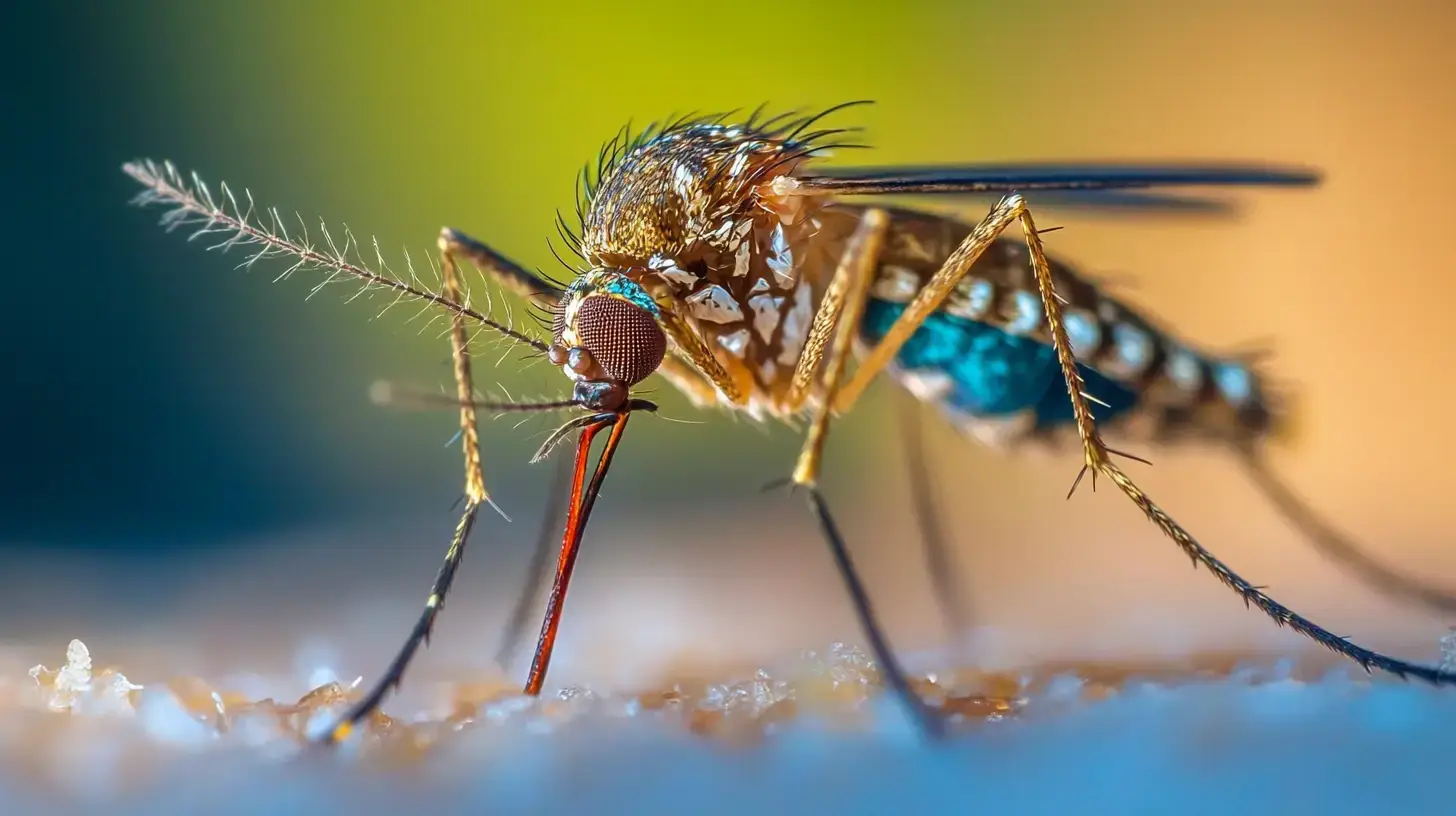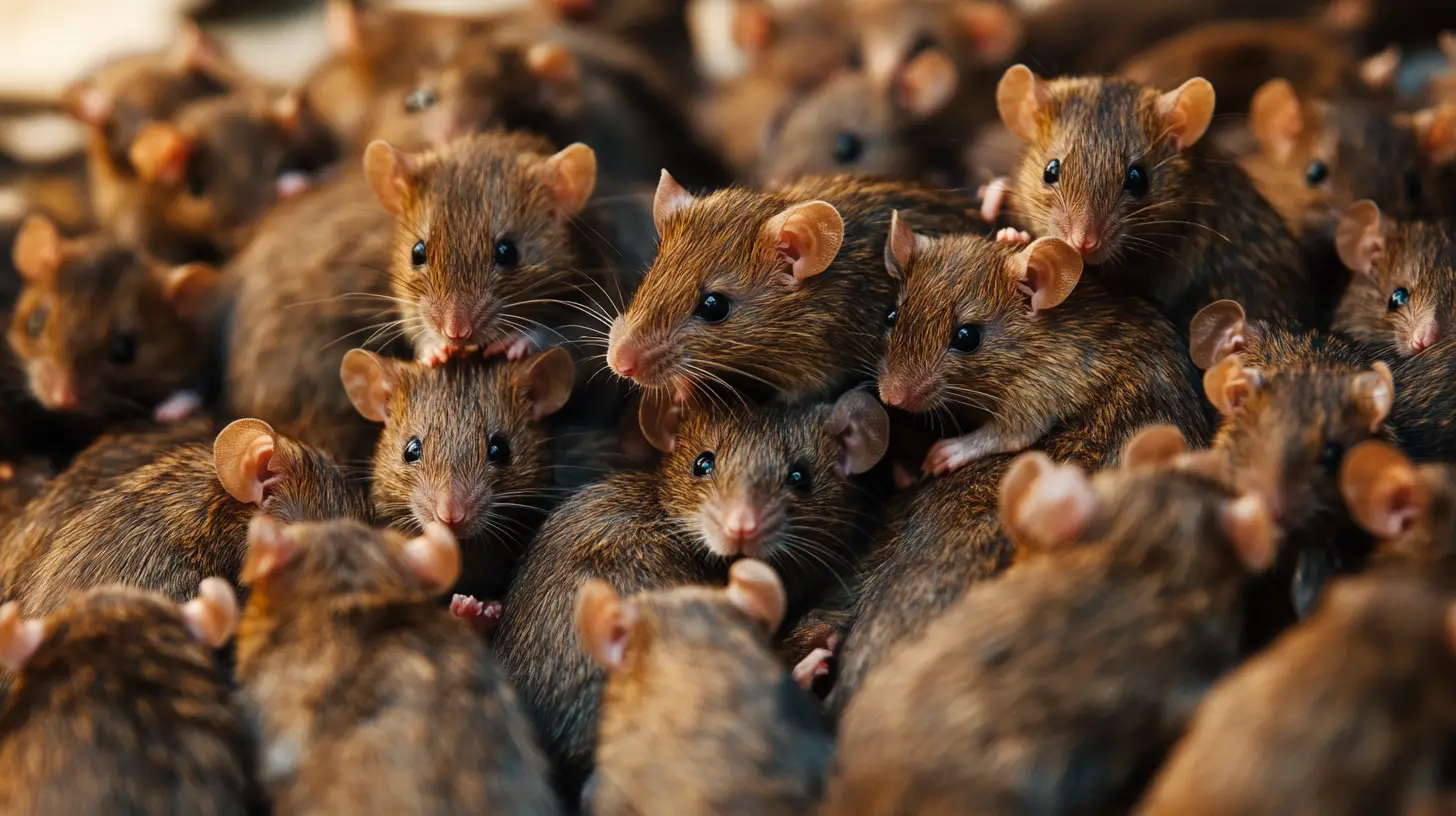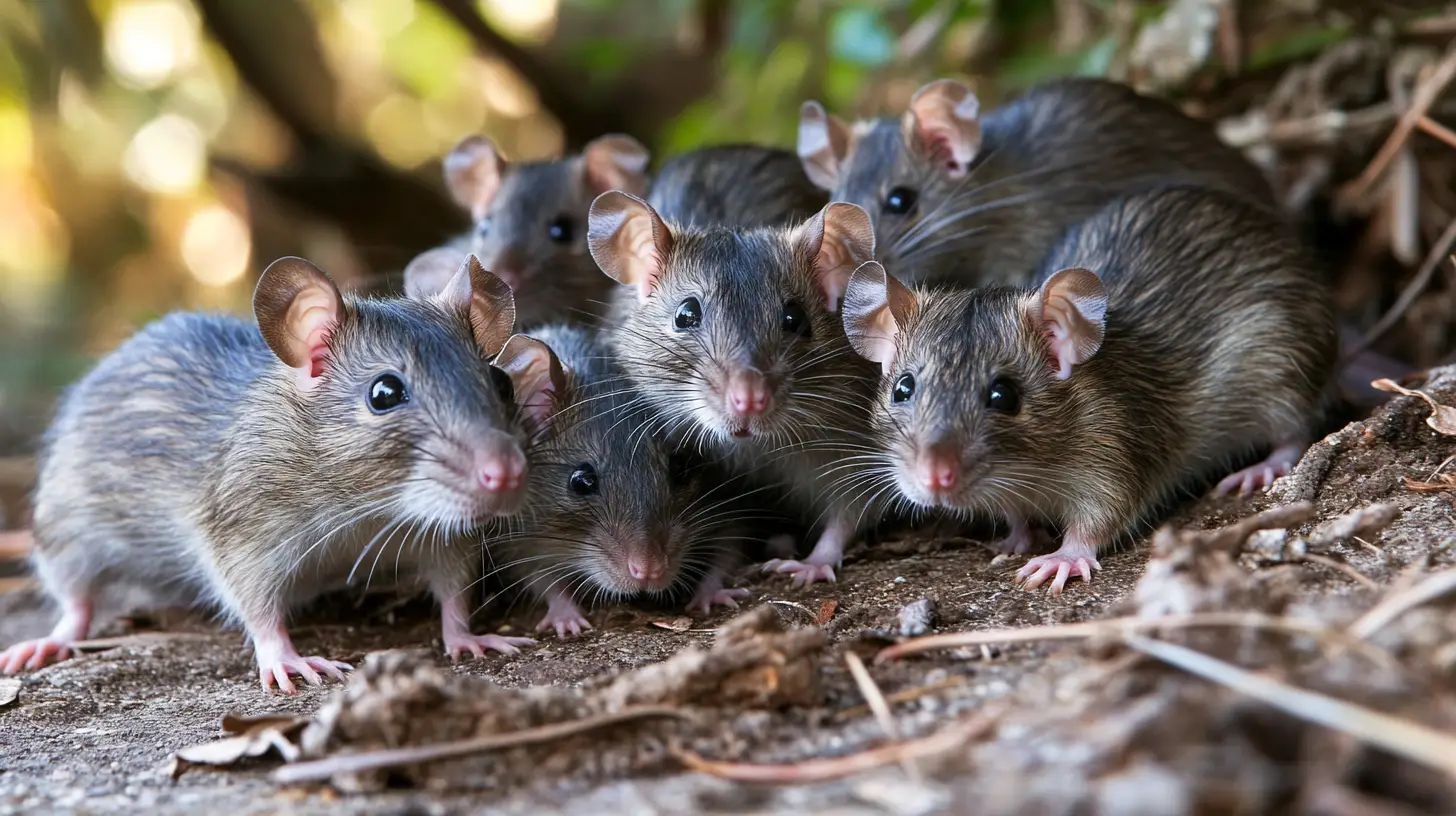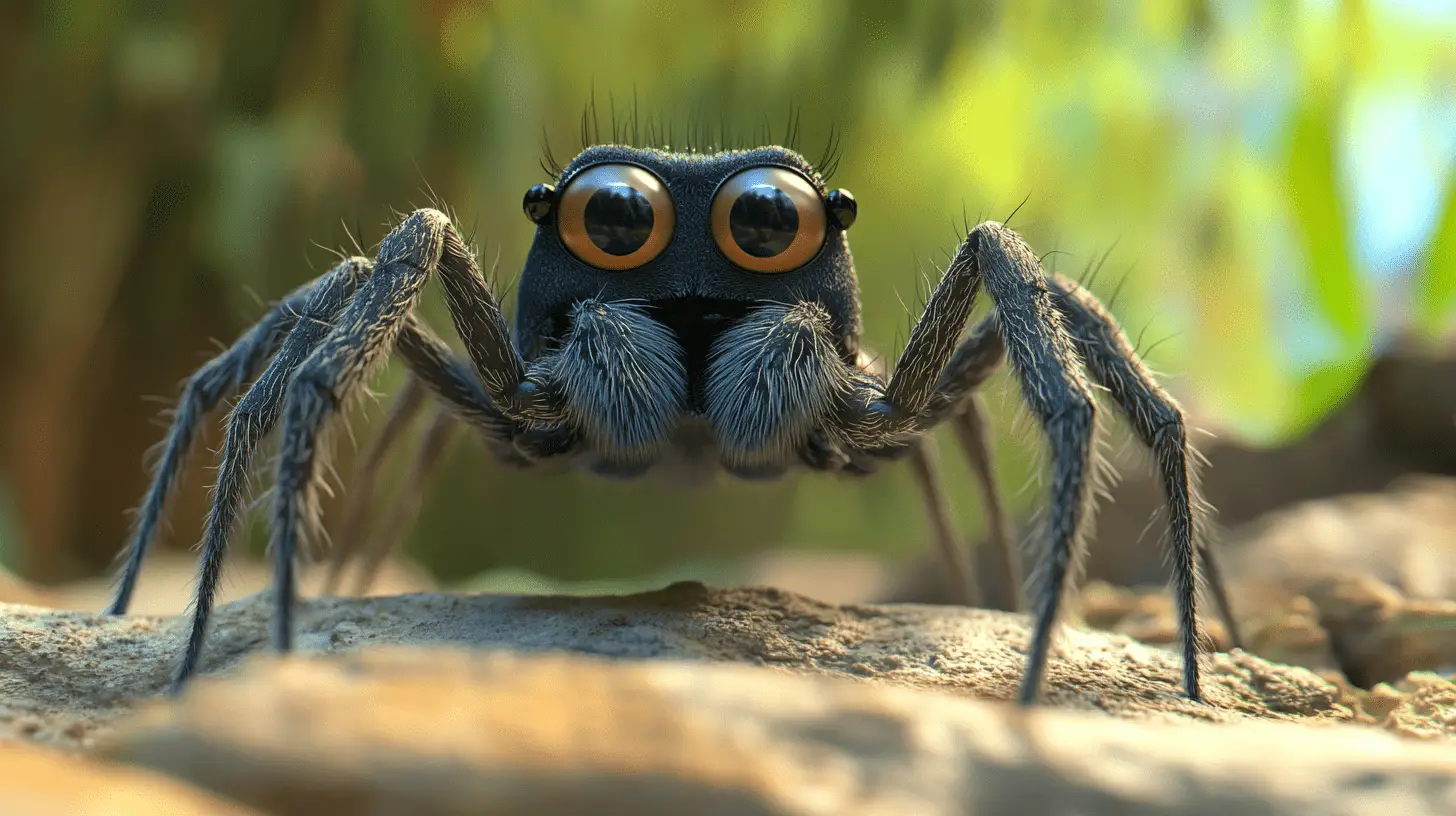
Table of Contents
Fire ants are notorious for their painful stings, which deliver an alkaloid venom known as solenopsin. This venom causes an intense burning sensation—hence the name “fire ant.” Beyond the sting’s immediate pain, fire ant venom can trigger allergic reactions, and in rare instances, lead to anaphylaxis, posing a serious health risk for some individuals.
To effectively get rid of fire ants, it’s essential to first understand their behavior and biology. By targeting what makes them thrive, we can offer practical solutions that work best for Sarasota homes. Our goal is to ensure your yard remains a safe, fire ant-free zone, so you can enjoy the outdoors without worry. Creating a space free of fire ants isn’t just about fire ant extermination—it’s about reclaiming your yard and ensuring peace of mind for you and your family.
Fire ants are more than a nuisance; their aggressive nature and painful stings can make spending time in your yard feel unsafe. With a localized approach that considers the unique environment of Sarasota, we offer strategies tailored to the specific needs of our community. Our methods go beyond typical fire ant control methods; we focus on long-term prevention and provide tips on keeping these unwelcome guests away for good.
Key Takeaways
- Understand Fire Ant Behavior: Knowing how fire ants operate—their biology and social hierarchy—is key to managing infestations effectively. This insight allows you to reclaim your outdoor spaces from these persistent pests in Sarasota.
- Two-Step Treatment Method: For best results, use a combination of broadcast bait treatment and targeted mound treatments. This two-step method addresses both widespread and localized fire ant issues.
- Natural Remedies: If you’re looking for eco-friendly alternatives, consider natural remedies like pouring boiling water, using dish soap, or spreading diatomaceous earth to manage fire ant colonies without chemicals.
- Biological Control Options: Integrated pest management can also include biological options, such as releasing parasitic wasps or phorid flies, which are natural enemies of fire ants and help reduce their populations over time.
- Chemical Insecticides and Baiting: For more persistent infestations, chemical insecticides and baiting can be effective. The key is targeting the queen, ensuring the entire colony is disrupted, preventing future generations, and eventually eliminating the fire ants from your Sarasota yard.
Understanding Fire Ants
Fire ants, especially prevalent in areas like Sarasota, pose a significant challenge due to their aggressive nature and environmental impact. The red imported fire ant, originally from South America, was introduced to the U.S. over 60 years ago, quickly spreading across nine southeastern states and covering more than 260 million acres.
The lifespan of red imported fire ants varies depending on their role and size. Minor workers typically live between 30 to 60 days, while media workers live 60 to 90 days, and major workers can survive for 90 to 180 days. Queens, but, are much longer-lived, with lifespans ranging from two to six years. The entire lifecycle—from egg to adult—takes around 22 to 38 days, contributing to their rapid colony growth and persistence.
The Role of the Queen: Laying the Foundation for Survival
Fire ant colonies are structured with a sophisticated hierarchy, where the queen is central to survival. Her primary role is to lay eggs, ensuring the colony’s growth. Some colonies have a single queen (monogyne), while others have multiple queens (polygyne), allowing faster expansion and making infestations even more challenging to control.
The lifespan of red imported fire ants varies by size and role within the colony. Minor workers usually live for 30 to 60 days, media workers for 60 to 90 days, and major workers for 90 to 180 days. The queen, on the other hand, can live anywhere from two to six years. The complete lifecycle, from egg to adult, takes about 22 to 38 days, which allows these colonies to grow quickly and establish themselves in new areas.
The Workers’ Duties: Foraging, Defense, and Colony Care
Worker ants are the backbone of a fire ant colony, handling key tasks like foraging for food, caring for larvae, and defending their nest. Their aggressive response when the nest is disturbed poses a serious challenge for Sarasota homeowners, often turning a simple yard activity into a painful encounter.
Fire ants are notorious for their swarming behavior. Unlike other ants that might scatter, fire ants act collectively to attack threats. They use a two-step attack: first, biting with their strong mandibles to latch onto the target, then stinging multiple times, injecting venom each time. This coordinated approach allows them to deliver maximum impact, making them especially dangerous to both people and pets.
Mature fire ant colonies can contain between 200,000 to 500,000 ants, with a queen capable of laying up to 1,500 eggs daily. This rapid reproduction contributes to their resilience and makes managing an infestation particularly challenging for homeowners in Sarasota.
Fire Ant Resilience: Rafts, Mergers, and Environmental Toughness
Fire ant colonies exhibit unique behavior compared to other ant species—they sometimes merge with neighboring colonies when queen pheromones are compatible. This ability to unite allows them to form “super-colonies,” giving them an edge in territory wars. These battles can be intense, with thousands of worker ants sacrificed, but they eventually enable stronger colonies to dominate larger areas and claim more resources.
Fire ants are also incredible survivors. During floods, they link together to form living rafts, keeping the entire colony afloat until they find dry land. Their naturally hydrophobic bodies allow them to protect the queen and young during these journeys, enabling survival for weeks. Beyond their adaptability to flooding, fire ants can endure extreme temperatures and thrive in both dry and wet environments, making them a particularly resilient species for Sarasota homeowners to deal with.
Red Imported Fire Ants (RIFA): Identification, Health Risks, and Control
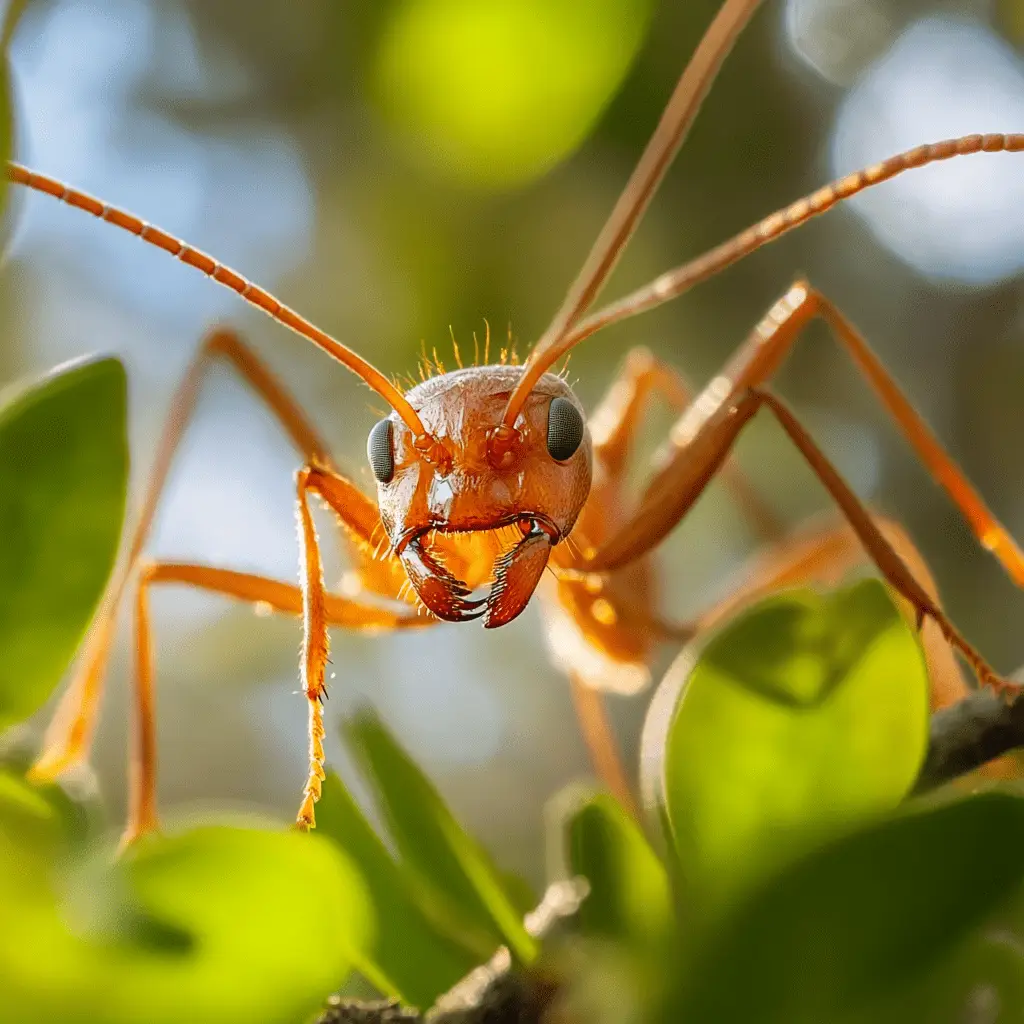
Identification and Characteristics
- Scientific Name: Solenopsis invicta
- Origin: Native to South America, introduced to the U.S. in the early 1900s; now found in 13 Southern states and Puerto Rico.
- Appearance: Reddish-brown in color, measuring between 1/8 to 1/4 inch (3 to 6 mm) in length.
- Nests: Build large dirt mounds, often in open, sunny areas. Mounds can be up to 18 inches tall.
- Behavior: Extremely aggressive, will swarm and sting repeatedly when disturbed.
Health Risks and Damage
- Stings: Painful, venomous stings that cause burning sensations, welts, and potential allergic reactions.
- Allergic Reactions: Severe reactions (anaphylaxis) can occur in sensitive individuals, requiring medical attention.
- Agricultural Damage: Fire ants can damage crops and agricultural equipment.
- Electrical Interference: They may infest electrical equipment, leading to short circuits.
- Ecological Impact: Disrupt local ecosystems and harm wildlife by outcompeting native ant species.
Control Methods
Two-Step Control Approach
- Broadcast Baiting: Use baits containing abamectin, hydramethylnon, indoxacarb, or spinosad to control multiple colonies.
- Individual Mound Treatments: Drenches, dusts, or mound-specific baits for treating particularly problematic mounds.
Non-Chemical Options
- Hot Water Treatment: Pouring hot water (190°F-212°F) on mounds can be effective in killing ants without chemicals.
- Biological Control: Ongoing research into using phorid flies as a biological control method.
Prevention
- Yard Sanitation: Maintain a clean yard by removing potential nesting sites, such as debris and wood piles.
- Seal Entry Points: Seal cracks and crevices around structures to prevent fire ants from entering buildings.
- Barrier Treatments: Apply baits or insecticidal barriers around structures to deter ants.
Red imported fire ants are invasive pests that can cause painful stings and significant damage. Effective control requires a combination of broadcast baiting, individual mound treatments, and preventive measures to reduce their impact on homes and agricultural areas.
Fire ants are notorious for rebounding quickly, which is why effective pest management requires a comprehensive approach. Targeting individual nests while also treating broader areas is essential for long-term control. Though their presence can negatively impact local biodiversity, understanding their behavior and biology is key to effectively and efficiently eliminating fire ants from your Sarasota property.
Fire Ant Infestations in Sarasota
Fire ants can be a significant nuisance, especially in warm places like Sarasota. Recognizing the signs of their presence is key to managing infestations effectively and understanding their environmental interactions.
Recognizing Fire Ant Mounds
Fire ant mounds are dome-shaped or flat nests often found in open areas like lawns, pastures, and roadsides. These mounds can vary in size from just a few inches to several feet across. Unlike typical ant hills, fire ant mounds have no visible entrance; the ants access their nest through underground tunnels, which they dig using their powerful mandibles. These tunnels can extend up to 30 feet and lead to a complex network of chambers, with some mounds growing up to 18 inches high—becoming a noticeable nuisance in yards, gardens, and fields.
Interestingly, fire ants often build their mounds with a southern exposure, using the sun’s warmth to regulate the nest’s temperature and optimize brood development. Here are some features that can help you identify fire ant mounds:
- No Visible Entry or Exit: Unlike other ant hills, fire ant mounds lack distinct openings.
- Underground Tunnels: Ants access the nest through underground tunnels that can be extensive.
- Honeycomb Structure: The nest’s interior is made up of interconnected chambers, resembling a honeycomb.
- Location: Mounds are frequently found near or beneath objects like rocks, logs, pavers, bricks, or timber.
Observing Ant Activity
Fire ant activity tends to peak during the warmer months, especially late afternoons or early evenings. During these times, you might notice distinct foraging trails. Observing these trails helps in identifying active colonies, making it easier to target specific areas to get rid of fire ants effectively.
Assessing Fire Ant Damage
Fire ants are capable of causing significant damage, especially since they are inexplicably attracted to electrical equipment. They frequently infest circuit boxes, air conditioning units, and even computers. It is believed that they are drawn to electric fields or magnetic forces, which often leads to equipment failure and costly short circuits.
In addition to the property damage they cause, their aggressive nature poses a threat to both people and pets. Fire ant stings can be extremely painful, and multiple stings may lead to serious health concerns. Understanding the extent of these risks is crucial for carry outing effective fire ant control measures, ensuring the safety of your outdoor spaces in Sarasota.
Fire ants are notorious for invading a variety of outdoor areas, including home lawns, school yards, athletic fields, golf courses, parks, and other recreational sites. They also frequently occupy electrical equipment, utility housings, gardens, compost piles, mulched flowerbeds, pavement cracks, and areas around water bodies. These diverse habitats must be considered when choosing a fire ant control strategy.
Two Approaches to Fire Ant Management
To effectively manage fire ant populations, two primary approaches can be used: individual mound treatments or area-wide broadcast applications.
Individual Mound Treatments
Treating individual mounds offers many methods, providing homeowners and pest control operators with plenty of choices. However, the main challenge is locating each mound for treatment, which can be time-consuming. Individual mound treatments are most useful when native ants coexist with fire ants, as they help target the invasive species without affecting the local ant population. Keep in mind, reinfestation can happen regardless of the treatment method used. Below are common methods for treating individual mounds:
- Mound Drenches: Large volumes of liquid, which can range from hot water to insecticide solutions, are poured over the mound. This method can be effective but may not reach the queen if she is deep within the nest.
- Surface Dusts: Dust or granular insecticides are applied over the mound and watered in. Like drenches, surface dusts can reduce the population but may not guarantee the colony’s complete elimination.
- Mound Injections: Insecticides are injected into the mound, sometimes under pressure. Though potentially more effective than drenches, mound injections require specialized equipment and can be time-consuming and hazardous.
- Baits: Baits can be sprinkled around the mound. The ants collect the bait and bring it back to feed the colony, including the queen. Although slower-acting, this method is generally more effective, as it targets the queen and the larvae.
- Mechanical Control: Mechanical or electrical devices exist for fire ant control, though their effectiveness hasn’t been well documented.
- Home Remedies: Some homeowners use boiling water or flammable liquids to treat mounds, but these methods are dangerous and pose significant risks to people and the environment.
Broadcast Treatments
Broadcast treatments are suitable for managing large areas. These treatments use granular insecticides or baits, often made with soybean oil and toxicants on a corn grit base, which are spread over a wide area. The ants find and carry these baits back to their colony. Although effective, there are some challenges:
- Some bait may end up in locations where ants won’t find it.
- If colonies are well-fed, they may ignore the bait.
- Certain baits are light-sensitive and may become inactive before being consumed by the ants.
- Baits are not specific to fire ants and may attract non-target species.
Overall, managing fire ant infestations in Sarasota requires a thoughtful combination of treatments, balancing efficiency, safety, and environmental considerations.
Biological Control
Natural enemies is another way to control red imported fire ant populations. Biological control agents include pathogens like the microsporidian protozoan Thelohania solenopsae and the fungus Beauveria bassiana. Additionally, two parasitoid flies from South America—Pseudacteon tricuspis and Pseudacteon curvatus—have been introduced into southern states.
These flies target fire ant workers, eventually decapitating them during larval development. Another potential control method being studied involves the parasitic ant Solenopsis daguerri, which invades fire ant colonies, replaces the queen, and takes control of the colony. These biological control agents offer a promising, eco-friendly approach to managing fire ant infestations in areas like Sarasota.
Frequently Asked Questions (FAQs)
What problems do red imported fire ants cause?
Red imported fire ants can cause a variety of issues, including painful stings to humans and pets, damage to electrical equipment, and harm to local wildlife. They aggressively swarm and sting when disturbed, posing significant health risks. Additionally, their mounds can disrupt lawns, gardens, and recreational areas, while their invasiveness can impact native species and reduce biodiversity.
How do you get rid of red imported fire ants?
There are several ways to eliminate red imported fire ants, including individual mound treatments and broadcast applications. Methods like mound drenches, baits, and injections can be effective in targeting the colonies. Biological control, chemical treatments, and even natural remedies like boiling water can also help manage infestations. For large-scale issues, it’s often best to hire professional pest control services.
How did the red imported fire ant get to the U.S.?
The red imported fire ant arrived in the United States by accident over 60 years ago. It is believed that these ants were unintentionally brought from South America through the port of Mobile, Alabama, in soil used as ballast on cargo ships. Since then, they have spread across the southeastern states, establishing themselves as a major invasive pest.
Where do red imported fire ants live?
Red imported fire ants prefer warm, sunny areas with loose, well-drained soil. They build dome-shaped mounds that can be found in open areas like lawns, fields, roadsides, and parks. They also frequently nest near or under objects such as logs, rocks, and garden structures. Their adaptability allows them to thrive in both urban and rural environments.
What are fire ants good for?
Although fire ants are typically considered pests, they do have some ecological benefits. They are effective predators of various insects, which helps in controlling pests like ticks, fleas, and crop-damaging beetles. Their tunneling also aerates the soil, which can improve water infiltration. However, these benefits are often outweighed by the negative impact they have on humans, pets, and native ecosystems.
What predators eat red imported fire ants?
Several natural predators of red imported fire ants include armadillos, birds, and certain ants like the parasitic Solenopsis daguerri. Research has also introduced parasitoid flies, Pseudacteon tricuspis and Pseudacteon curvatus, which specifically target fire ant workers. These flies lay eggs on the ants, which eventually leads to the ants’ death. Fungi like Beauveria bassiana are also being researched for biological control.
What are the characteristics of red imported fire ants?
Red imported fire ants are reddish-brown, with a darker abdomen (gaster). They measure between 1/16 to 1/4 inch in length. They have a distinctive narrow waist with two nodes and ten-segmented antennae. Fire ant workers vary in size, and their colonies are organized with a queen, workers, and reproductive males. Their aggressive nature and painful stings distinguish them from other ant species.
What is the life cycle of a red imported fire ant?
The life cycle of a red imported fire ant consists of four stages: egg, larva, pupa, and adult. The entire process takes between 22 and 38 days. Workers can live between 30 to 180 days, depending on their size, while queens can live for two to six years. The queen’s role is to lay thousands of eggs to ensure the growth and survival of the colony.
Do red imported fire ants sting?
Yes, red imported fire ants sting, and they can be very aggressive when their nest is disturbed. They use their mandibles to latch onto a target and then sting multiple times, injecting venom with each sting. The stings can cause a painful burning sensation and may lead to pustules, allergic reactions, or even anaphylaxis in sensitive individuals.
What do red imported fire ants eat?
Red imported fire ants are omnivores. They feed on insects, small animals, seeds, and sugary substances such as honeydew produced by aphids. Their varied diet helps them thrive in different environments, making them highly adaptable and challenging to control. They forage both day and night, depending on conditions, to sustain their growing colonies.

